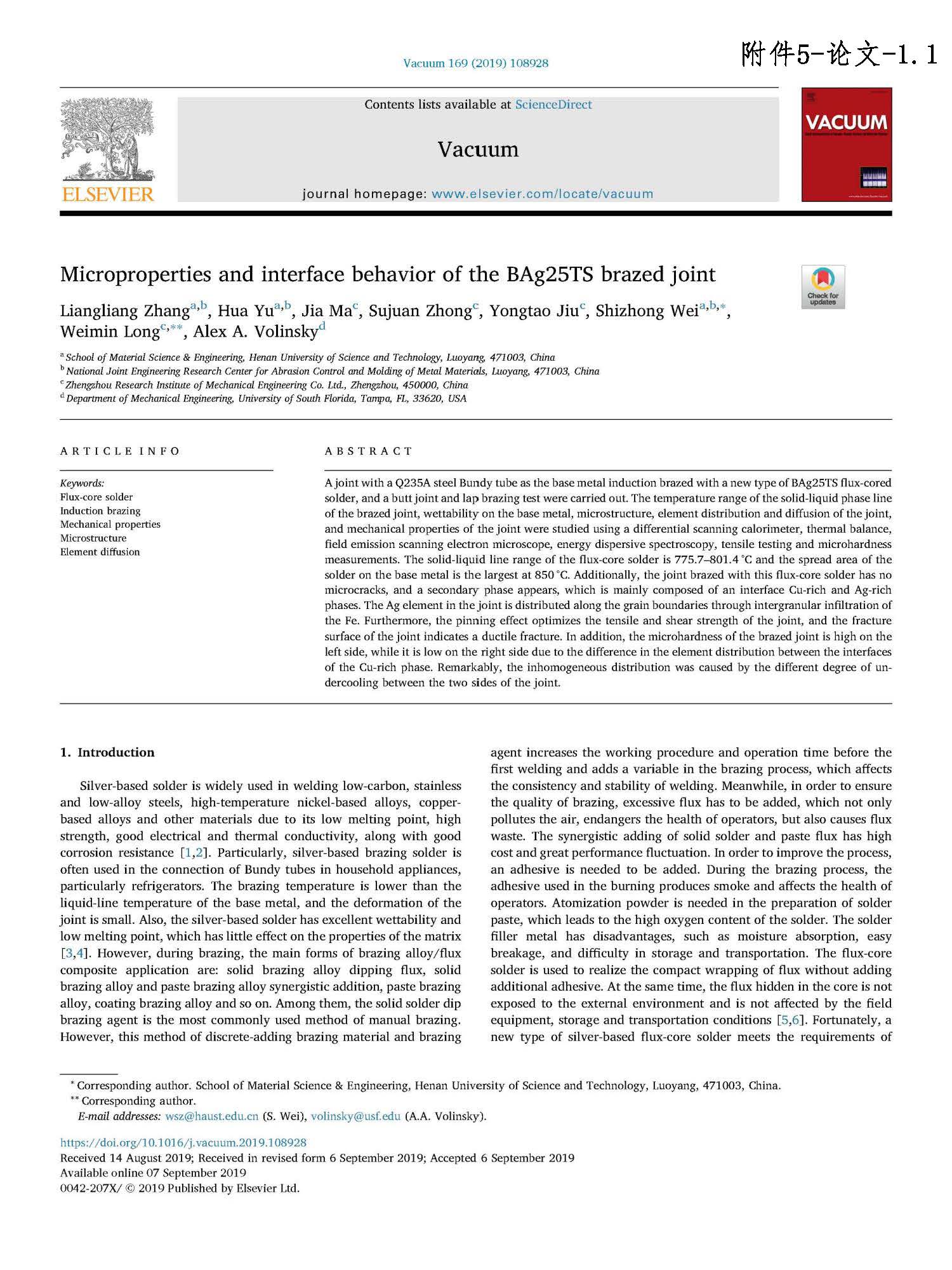A joint with a Q235A steel Bundy tube as the base metal induction brazed with a new type of BAg25TS flux-cored solder, and a butt joint and lap brazing test were carried out. The temperature range of the solid-liquid phase line of the brazed joint, wettability on the base metal, microstructure, element distribution and diffusion of the joint, and mechanical properties of the joint were studied using a differential scanning calorimeter, thermal balance, field emission scanning electron microscope, energy dispersive spectroscopy, tensile testing and microhardness measurements. The solid-liquid line range of the flux-core solder is 775.7–801.4 °C and the spread area of the solder on the base metal is the largest at 850 °C. Additionally, the joint brazed with this flux-core solder has no microcracks, and a secondary phase appears, which is mainly composed of an interface Cu-rich and Ag-rich phases. The Ag element in the joint is distributed along the grain boundaries through intergranular infiltration of the Fe. Furthermore, the pinning effect optimizes the tensile and shear strength of the joint, and the fracture surface of the joint indicates a ductile fracture. In addition, the microhardness of the brazed joint is high on the left side, while it is low on the right side due to the difference in the element distribution between the interfaces of the Cu-rich phase. Remarkably, the inhomogeneous distribution was caused by the different degree of undercooling between the two sides of the joint.
